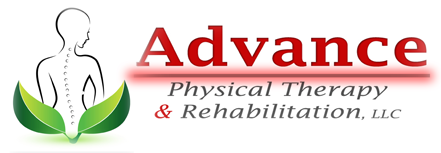
09 Jan Physical Therapy Helps with Neck Pain

Neck pain can make everyday activities too painful to accomplish without a grimace. This condition can be caused by a number of problems, but no matter what the underlying cause of your neck pain may be, physical therapy can help. In this guide, we’ll introduce you to some details regarding neck pain, and we’ll help you learn more about the treatments that physical therapists can use to return your neck to its normal, comfortable state.
How Is the Neck Laid Out?
The neck is also called the cervical spine, and it consists of the seven vertebrae located at the top of your spine. A spongy layer called an intervertebral disc is located between each neck vertebra and its neighbor, and every neck vertebra is equipped with two joints that connect to the vertebra directly below it.
Your neck vertebrae protect your spinal cord, and they also support the weight of your head. Under normal circumstances, the neck is very flexible, but it can lose its flexibility if a variety of conditions occur.
What Causes Neck Pain?
In some cases, neck pain can be caused by poor posture. However, this condition is much more commonly caused by trauma like whiplash, which is the main reason why patients visit physical therapists for help with neck pain. Neck pain can also sometimes be caused by osteoarthritis. When you visit with your physical therapist, they’ll be able to provide you with a better idea of which underlying condition is causing your neck pain.
Where Do You Feel Pain in Your Neck?
In most cases, people feel neck pain directly along their cervical spine. However, you may also feel neck pain on the side of your neck, and you may even feel this type of pain closer to your shoulder blade. Furthermore, if you have a pinched nerve in your neck, your neck pain may travel down your arms and into your hands, and this condition can also cause weakness or tingling in one or both of your arms and hands.
What Do You Do When You Feel Neck Pain?
In many cases, neck pain will resolve itself within a matter of days or weeks. Consult with your general practitioner (GP) first, but if they recommend surgery or narcotics, get a second opinion from a physical therapist. If your neck pain doesn’t go away within 4-8 weeks, you’ll need to take action to protect your health.
How Do Physical Therapists Evaluate Neck Pain?
When you see a physical therapist for your neck pain, they will begin the visit with an evaluation. With this evaluation, your physical therapist will determine the nature of your neck pain, and they will develop a plan to treat your condition. The tools that your physical therapist may use include:
Range of Motion Tests
Your physical therapist may begin by testing how far your neck moves in each direction. This evaluation is known as a range of motion (ROM) test, and your physical therapist may use a device called a goniometer to get a more accurate reading of your ROM, and he or she may also observe the quality of your neck motion.
Strength Tests
Nerve damage in your neck can cause weakness in specific muscle groups in your arm. Your physical therapist may measure your arm strength to find out if you are experiencing this symptomatic weakness.
Tenderness to Palpation
Palpation is when a physical therapist touches various parts of your body to determine if they are excessively tender, and your physical therapist may push on your spine or neck as part of this examination technique.
Functional Mobility Analysis
Your physical therapist may inquire about activities that you find yourself unable to perform due to your neck pain. He or she may ask you to try to perform these activities to gauge your reaction.
How Do Physical Therapists Treat Neck Pain?
After your physical therapist has determined the cause of your neck pain, he or she will use a number of different types of treatment to resolve your condition. Here are some of the types of treatment that your therapist may use:
Massage
Massage relaxes the muscles in your neck, and it also reduces inflammation. Whatever the cause of your neck pain may be, massage can release tension and help your neck heal itself.
Postural Correction
Your therapist may help you correct your posture if he or she determines that the way you sit has been contributing to your neck pain. In addition, he or she may use a lumbar support roll to help you improve your posture.
Joint Mobilization
Your therapist may use joint mobilization techniques to improve your neck’s ROM and treat neck pain. Joint mobilization is a relatively risky technique, and a good physical therapist will clearly delineate the pros and cons of this treatment method before he or she proceeds.
Traction
Traction is when the vertebrae in your neck are physically separated from each other. This treatment can be helpful in the case of bulging or herniated discs, and it may also help with nerve pinching. In many cases, traction is performed at the suggestion of an orthopedist or neurosurgeon.
Therapeutic Modalities
Transcutaneous electrical nerve stimulation (TENS) and ultrasound are two types of electromagnetic therapies that may help alleviate your neck pain. These treatments don’t always alleviate the root causes of your pain, but they do usually reduce neck pain symptoms.
Application of Heat and Cold
Your physical therapist may apply heat or cold to your neck, or they may direct you to use these treatments at home.




Sorry, the comment form is closed at this time.